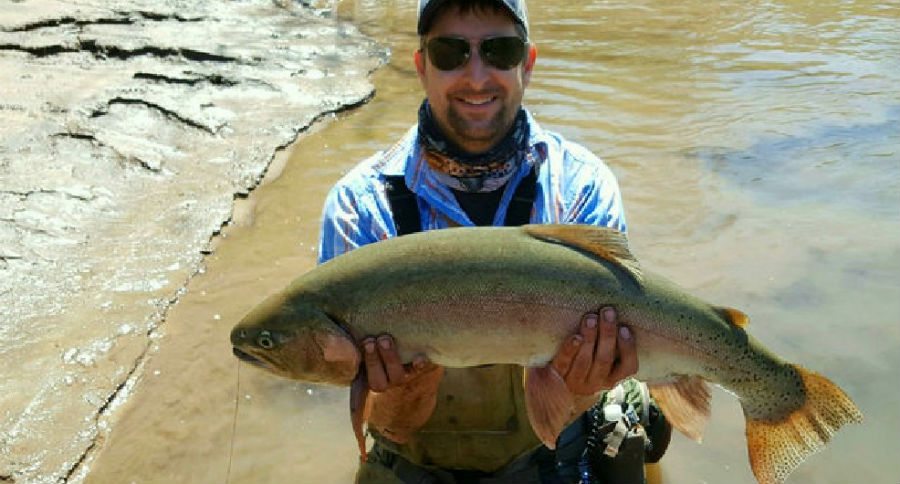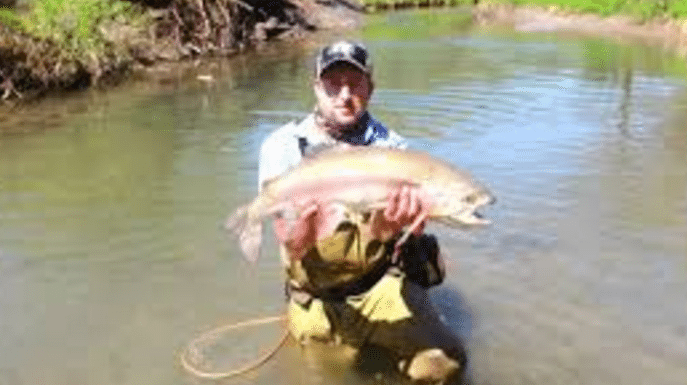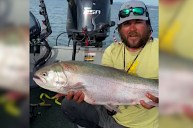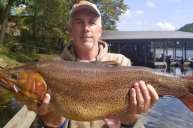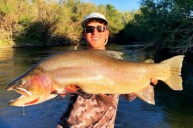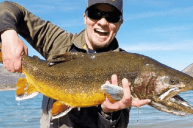A Wisconsin angler smashed the current state record for rainbow trout, but unfortunately, his fish won't count for the record book.
Trout fisherman Ben Halfen was fishing in Crawford County, Wisconsin this past weekend when he hooked a shark. At least that's how Halfen described the massive fish on the end of his line. What it actually was was a state record worthy rainbow trout.
Unfortunately for Halfen, his massive trout won't make the record book.
It's still catch and release for inland trout in Wisconsin. If Halfen and his giant rainbow could have waited until May 6th, he could have registered the fish for record consideration. As it is, he measured the length and girth of the big trout and then returned it to the water.
His fish measured 31.5 inches long and 20.5 inches in girth. With those measurements it is estimated that the trout weighed 15.5 pounds. That's considerably bigger than the current state record rainbow pulled from Elbow Lake in the northern Wisconsin in 2006. That fish went 29.5 inches long and weighed 12.3 pounds.
Crawford County lies in the southwestern part of the state.
"When we saw it, we were freaking out," Halfen said. "It looked like a shark in the water compared to the normal trout you see. It just defied reason. Your mind didn't even really understand what you were seeing."
"It was considerably bigger than what I'm used to, and it actually ends up being almost six inches bigger than the largest trout I've ever caught," he said.
The Wisconsin DNR indicates that the Live Release Record Fish category will go into effect May 6. This new category allows anglers to measure and then release trophy fish, and still qualify for record book recognition.
In order to qualify a fish for the catch and release record book, anglers will need to fill out an application form and take several pictures of the fish from different angles. One of the pictures must show the fish with a measuring tape clearly displaying the length while another photo must show the angler with the fish.
"A lot of times, you're taking those large fish out of the population, and they're large and old and probably have a pretty good genetic background," DNR Fisheries Biologist Karl Scheidegger said.
"They've survived that long and contributed to the population," Scheidegger said. "So if you can keep those fish in, obviously it'll be a benefit to the population, and it'll continue to spawn. Now we can have people feel good about having a record and feel better because they don't have to kill the fish to do it."
"There's currently a state record out there swimming around for somebody else to catch, which I think is really neat," Halfen smiled.
Like what you see here? You can read more great articles by David Smith at his facebook page, Stumpjack Outdoors.
NEXT: 59-Pound Hog Catfish Gives 11-Year-Old His Fourth Lake Record
